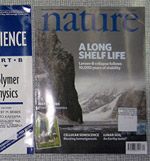How to bring conservation biology into the high school classroom
 Education
Education  Researchers from New York have presented an approach to help teachers better integrate conservation biology into the high school classroom. This is important because teaching conservation biology to students could play a key role in influencing people to "pursue careers or live lifestyles that would reduce the negative impact of humans on the world."
Researchers from New York have presented an approach to help teachers better integrate conservation biology into the high school classroom. This is important because teaching conservation biology to students could play a key role in influencing people to "pursue careers or live lifestyles that would reduce the negative impact of humans on the world."
Yet, in the United States - and probably many other countries - few secondary schools have specific classes in conservation biology. A national focus on standardized testing results is likely to prevent substantial changes in class offerings from occurring anytime soon.
However, the approach presented by Yael Wyner from the City College of New York and Rob DeSalle from the American Natural History Museum circumvents this problem by integrating conservation biology directly into existing high school classes on ecology.
The framework, called Ecology Disrupted, engages students to "learn about the importance and complexity of normal ecological processes by studying what goes wrong when people disrupt these processes."
While high schools often teach both ecology and environmental studies, the researchers note that these two topics are typically segregated as distinct units in teaching sequences and text books. Conversely, the approach advocated by Wyner and Dessale merges the teaching of local environmental issues into ecology classes to illustrate the real world relevance of ecological principles.
"For example, teenagers in the northeastern United States are well versed in the perils of Lyme disease, but most are ignorant of its connection to fragmented habitats and disrupted food webs," the researchers write. "By placing Lyme disease in its ecological context, students can deepen their understanding of the causes of Lyme disease and related ecological principles (e.g., habitats and food webs)."
The idea is that a focus on local environmental issues can not just introduce concepts of conservation biology but can also make ecology more meaningful to students.
Another aspect of the Ecology Disrupted framework is to use academic studies in conservation biology as a starting-off point for building lesson plans about ecology.
Wyner and DeSalle present an example in which a lesson was created based on a study on highways in the Sierra Nevada Mountains blocking the movement of bighorn sheep leading to inbreeding. While the study write-up, itself, was probably too advanced for a secondary school classroom, the results of the study were reformatted into a lesson that teaches ecology by linking the daily lives of students to the underlying environmental issue.
The researchers tested the framework in the classrooms of over 30 teachers in New York City Public Schools between 2008-2009 using lessons plans derived from the study on genetic inbreeding and another study on the water quality impacts of salting icy roads.
Initial results have been promising with teachers reporting better outcomes using the framework. However we will learn more in the next few years as the program is expanded to 60 schools and controlled experiments are launched to test its effectiveness.
--by Rob Goldstein
WYNER, Y., & DESALLE, R. (2010). Taking the Conservation Biology Perspective to Secondary School Classrooms Conservation Biology DOI: 10.1111/j.1523-1739.2010.01478.x




Reader Comments